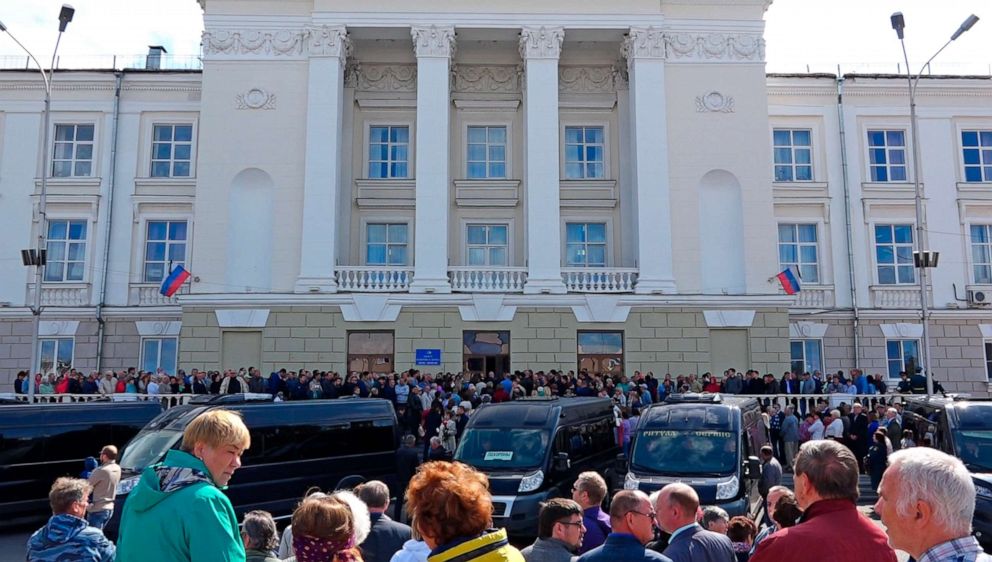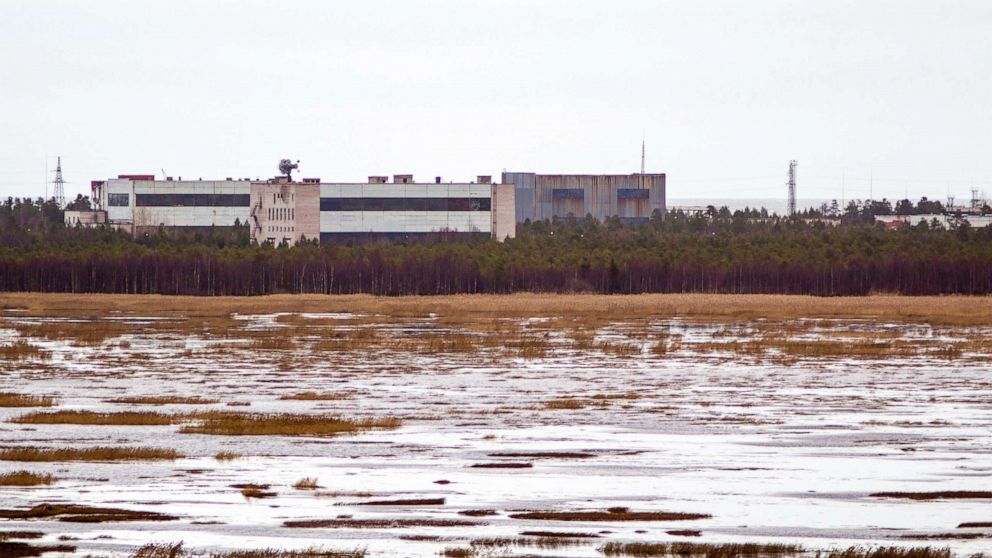[ad_1]
The radiation spike that followed the apparent explosion of a nuclear-powered missile engine in Russia — an event that left seven dead and has been cloaked in secrecy — was higher than previously indicated by the country’s officials, Russian government weather agency on Tuesday said
Interested in Russia?
Add Russia as an interest to stay up to date on the latest Russia news, video, and analysis from ABC News.
The news comes amid conflicting reports that authorities were preparing to evacuate a village close to the Arctic test site where the blast occurred and other details surrounding the event.
Roshydromet, a state weather monitoring body, said its sensors in a city near the Nenoksa Missile Test Site in northern Russia had picked up a spike in background radiation levels 4-16 times above the norm immediately after the blast last Friday. The spike lasted about an hour and half, before levels returned to normal, the agency said.
The levels were still relatively low, but above what Russian authorities on Sunday said, when they noted the spike was 2 times above the norm.
The International Atomic Energy Agency on Tuesday issued a statement saying Russia had informed it the radiation levels around the site were equivalent to natural radiation.
The data on the radiation came five days after the explosion that killed five nuclear engineers and two defense personnel and that U.S. officials and outside experts have said they believe “likely” involved a nuclear-powered cruise missile. The weapon, able to evade radar, was touted by president Vladimir Putin as the centerpiece of Russia’s new nuclear arsenal.
The delay in releasing the information reflects the highly secretive response from Russian authorities, who first appeared to conceal that the blast involved radiation and then only slowly released details about it — for some, conjuring up echoes of the Soviet response to the Chernobyl nuclear power plant disaster in 1986.
 Russian State Atomic Energy Corporation ROSATOM via AP
Russian State Atomic Energy Corporation ROSATOM via AP
In the first days after the suspected explosion, Russia’s defense ministry initially made no mention the engine had contained nuclear materials and then denied there had been a spike in radiation. Local city officials on the Friday released a statement saying the spike had been 2 times above the norm, but later deleted it from the internet.
State television also initially largely ignored the accident, barely mentioning it in news broadcasts for the first two days. Russia’s Federal Nuclear Center, which carried out the test, only on Sunday first acknowledged that the test had involved “radioactive materials.” The test had involved an attempt to use a small-scale radioisotope power source inside a liquid propellant engine, Russia’s atomic agency Rosatom said in a statement.
The Kremlin on Tuesday for the first time commented on the explosion, which U.S. officials and outside experts believe most likely happened during testing on the nuclear-powered cruise missile that president Vladimir Putin has touted as a crown-jewel of a next generation arsenal for Russia.
Putin’s spokesman, Dmitry Peskov, on Wednesday told reporters that “all relevant agencies were working to ensure the safety of Russian citizens,” saying he had nothing more to add on the explosion.
A U.S. official on Monday told ABC News that they thought it was “likely” the explosion had been caused during a test on the missile, named the SSX-C-9 Skyfall by NATO and as the 9M370 Burevestnik by Russia.
The official said the U.S. had detected increased radiation levels close to the rocket.
According to Greenpeace, whose own testing shortly after the blast showed levels 20 times above the norm, the radiation spike indicated there had been a release.
Rashed Alimov, director of GreenPeace Russia’s energy department, told ABC News that because authorities were providing so little information it was impossible to say how much a risk explosion posed.
The elevated levels “were simply an indicator that there was a release,” he said. He said Russian authorities ought to provide clear information to people and warned that it was possible the rocket engine contained types of radioactive material that could pose a health risk if ingested.
In a sign of the uncertainty surrounding the blast, there were conflicting reports in state media as authorities apparently first requested and then cancelled a temporary evacuation of the village of Nenoksa, close to the test site. Ksenia Yudina. The head of the Nenoksa village council’s press service told the state news agency RIA Novosti residents had been asked to prepare to leave on Wednesday morning while the military carried out an operation there.
But Arkhangelsk’s regional governor, Igor Orlov, hours later rejected that as “nonsense” saying no evacuations were taking place. Yudina then told Interfax that the request to leave had now been cancelled.
“There’s a lot of contradictory information,” said Alimov. “So it’s clear that people are having to operate in the conditions of a lack of information.
[ad_2]
Source link

